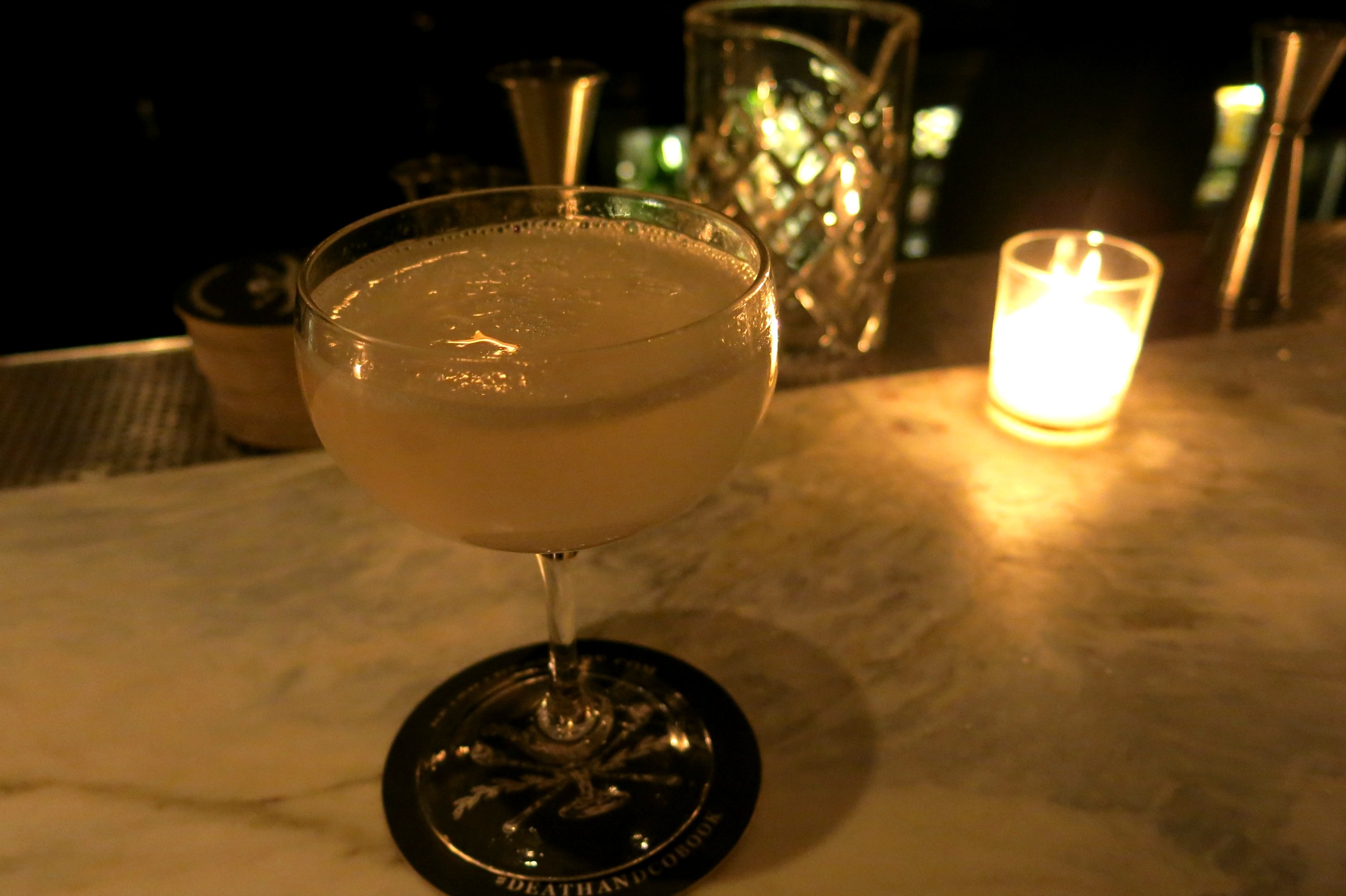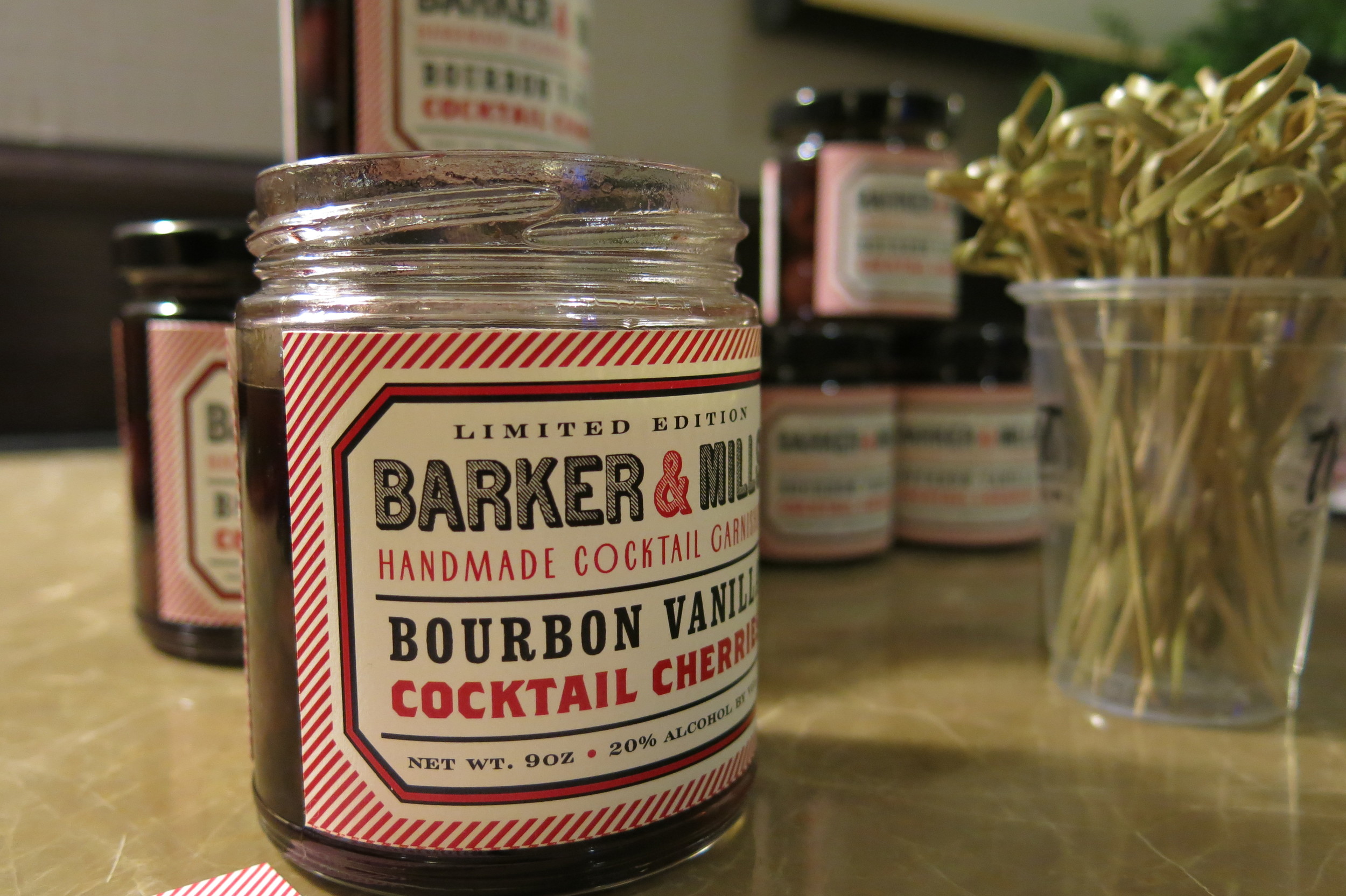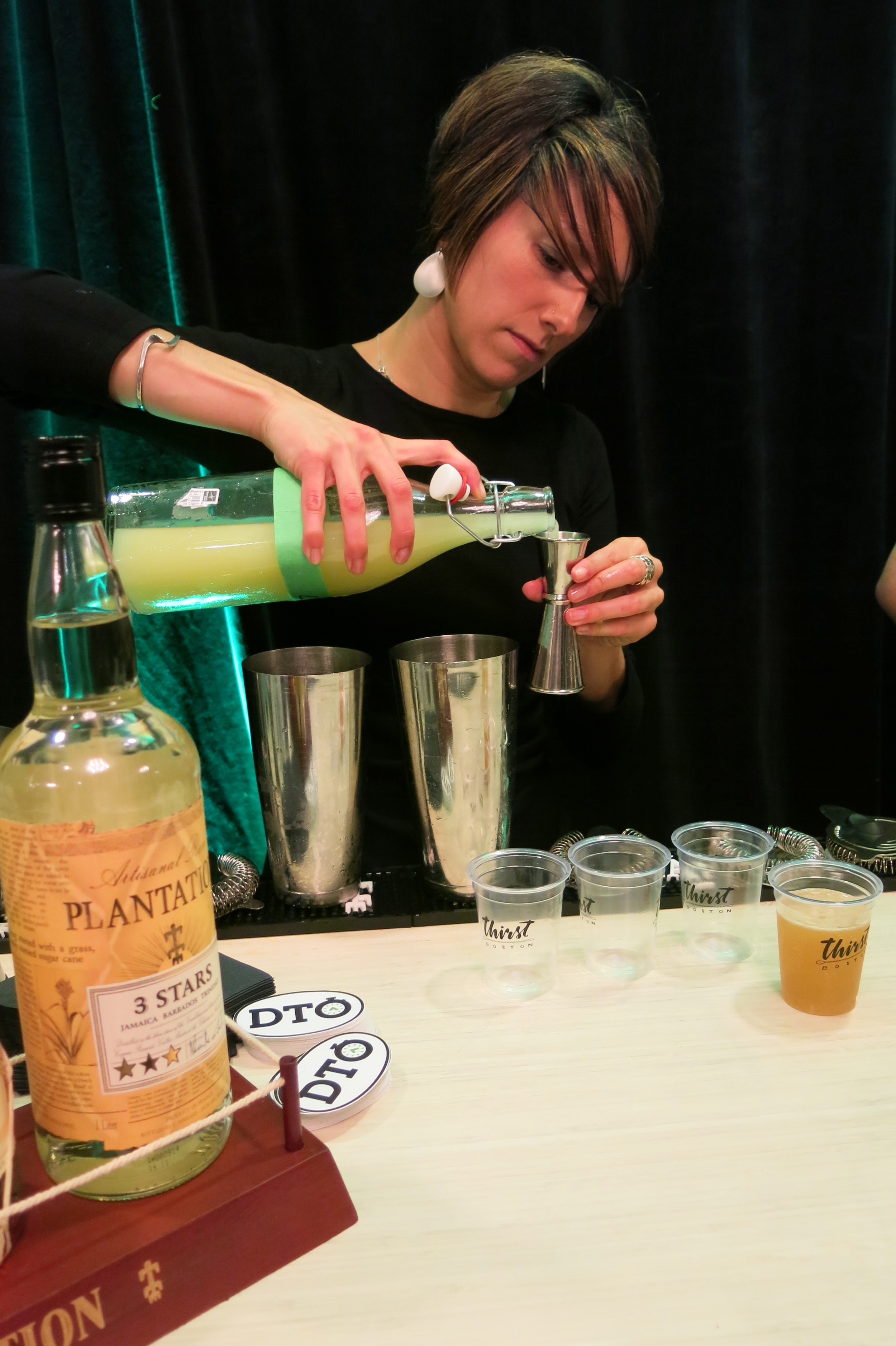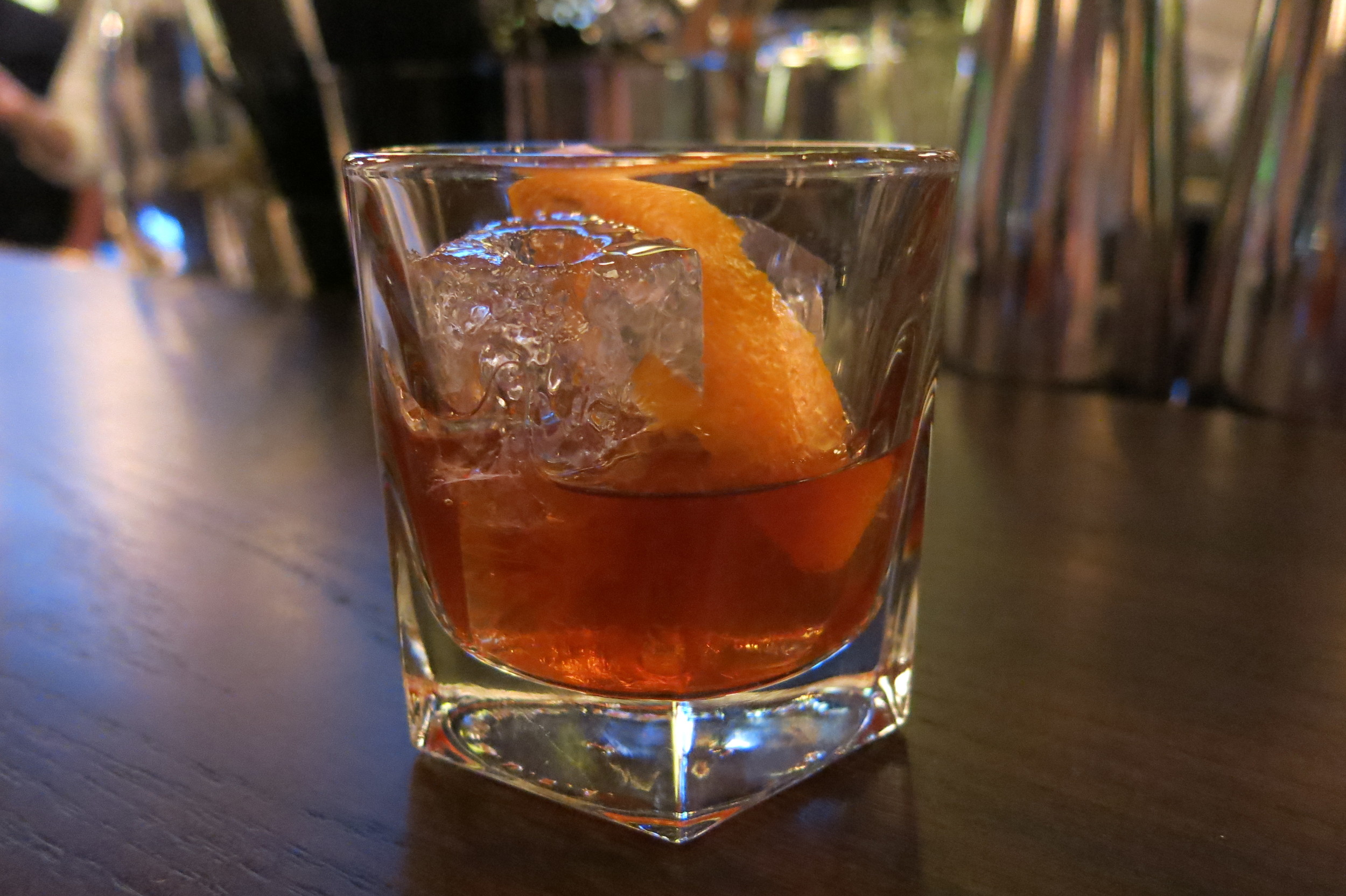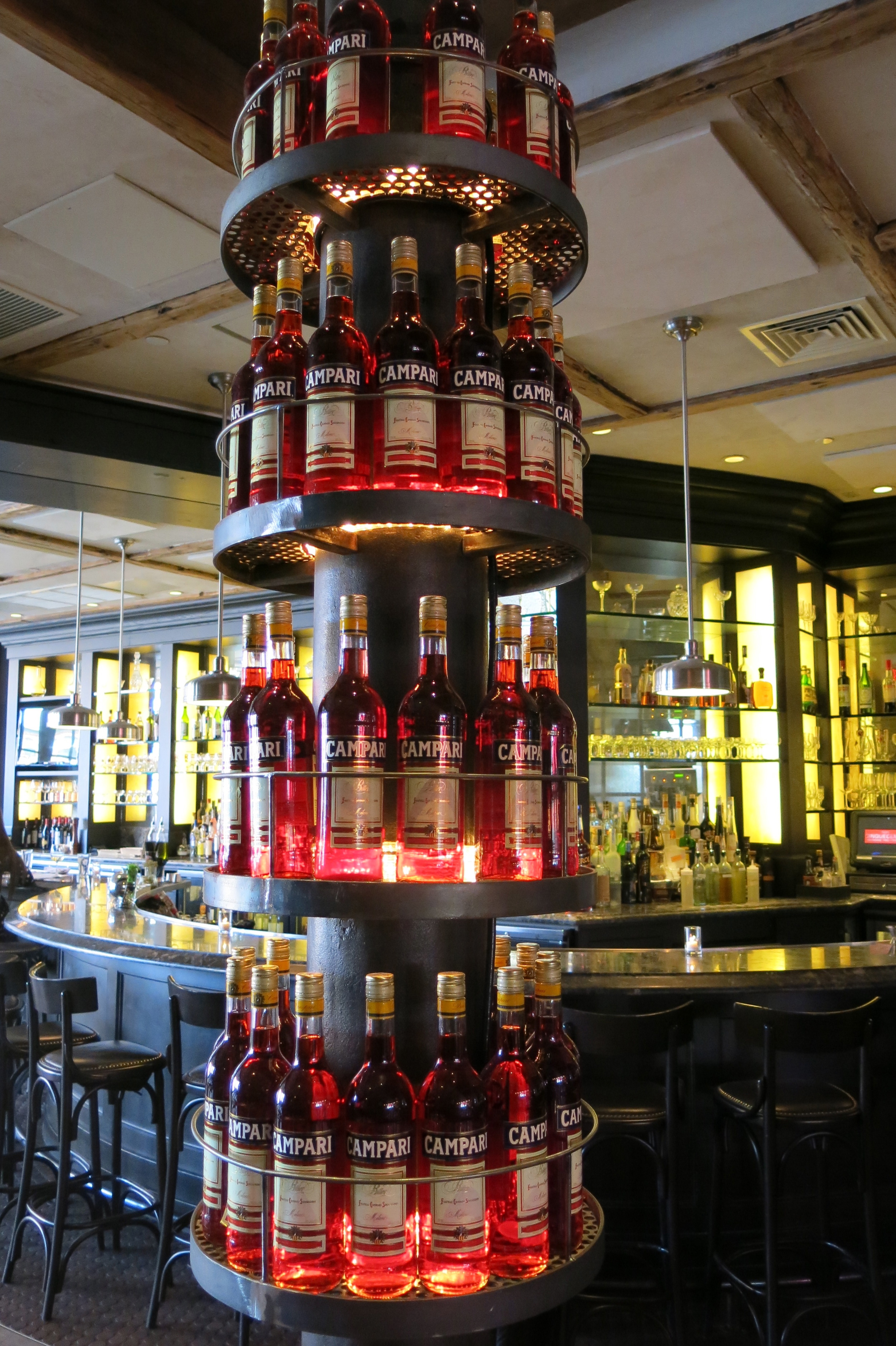I own about a half-dozen cocktail books – an old-school classic or two, some contemporary offerings, a couple of more focused ones. So where do I turn when I’m looking for a recipe? The web, of course.
The notion of a hard-copy cocktail book might seem a little quaint in a day and age when thousands of recipes and their innumerable variations, along with pictures, instructional videos, and detailed tips, tricks, and suggestions, are instantly available to anyone with a computer or smartphone. But when one of the world’s most acclaimed cocktail bars publishes a book, it’s time to make room on the shelf.
New York’s Death & Co. opened its doors in late 2007 to little fanfare. A few days and a New York Times feature story later, the East Village bar had become something of a local phenomenon, with lines of customers snaking around the block. And since that time, Death & Co. has come to be recognized as a pillar of the craft cocktail renaissance. The bar is universally admired – except, perhaps, by the grumpy neighbors who tried to shut them down – and their work is constantly imitated. Death & Co.’s inventive drinks have appeared on cocktail menus all over the world, including here in Boston (I was introduced to their Oaxacan Old Fashioned through Ward 8).
So when Death & Co. publishes a book, it’s not just another resource for professional and amateur mixologists – it’s an industry event.
In an effort to promote Modern Classic Cocktails, Death & Co. has been sending its bartenders on a tour of major U.S. cities, where they’re whipping up a few of the cocktails that have won the bar such renown. For their local visit, they set up in shop in one of Boston’s top cocktail bars – The Hawthorne. Owner Jackson Cannon was on hand, greeting guests upon arrival and pouring cups of Bloodhound Punch, made with bourbon, spices, lemon juice, blueberry syrup, and club soda.
The setting could hardly be more appropriate. The Hawthorne has garnered its own share of national praise, and like Death & Co., operates on the principle that discerning customers care about more than just the warm buzz they get from a glass of booze. A comfortable atmosphere, a vantage point from which to enjoy the artistry of a cocktail being made, the chance to appreciate or better understand its intricacies – these are essential to the experience.
Making a great drink is only one aspect of running a truly exceptional cocktail bar, so it’s only appropriate that Death & Co.’s book isn’t merely a collection of recipes. And since “The Specs,” as the recipes are called, only account for about half of the book, it’s almost a misnomer to call Modern Classic Cocktails a cocktail book. More than anything, it’s a story, and one with familiar themes – having a good idea and believing in it; finding the right people to share in your dream and help usher it into reality; making painful sacrifices for a greater purpose; overcoming adversity; starting small and not losing touch with your ideals, even when you find success. Essays contributed by regular customers enrich the narrative further; this isn’t just experts expounding upon their craft, but an open conversation with a multitude of voices.
Of course, the experts and their cocktails are still the stars of the show, and as someone who’s not yet been to Death & Co., I was excited to finally sample their legendary wares and meet the people who make it all happen.
The recipe chapter of the book devotes individual sections to base spirits (except vodka; long story) along with classic and vintage cocktails, variations on popular drinks, punches, swizzles, and more. The list of featured drinks at the Hawthorne event combined original compositions with a few inventive twists on the classics, all executed with Death & Co.’s trademark ingenuity and flair.
Gin was one of the evening’s predominant spirits, starting with the Moon Cocktail. Made with Plymouth gin, amontillado sherry, crème de pêche, and a lemon twist, it’s a mostly dry cocktail with fruity notes from the peach liqueur.
The cucumber ribbon atop the Kew Gardens Cooler gets lots of oohs and ahhs, but this mix of Beefeater 24 gin, Aperol, grapefruit juice, cucumber, and Scarlet Glow tea syrup tastes as good as it looks.
The elegant Bella Luna combines Plymouth gin, crème de violette, St. Germain, lemon juice, and simple syrup for a smooth but potent cocktail with distinct floral notes.
A couple of whiskey-based concoctions made the list as well, including the sweet and smoky Little Engine, made with the Famous Grouse, a 10-year tawny port, lemon juice, maple syrup, and apple butter.
The Scotch Lady also employs the Famous Grouse, combining the cocktail-friendly scotch with bonded apple brandy, lemon juice, simple syrup, grenadine, and egg white for a dark, creamy drink. A brandied cherry serves as a stylish garnish.
In addition to their many original creations, Death & Co. is of course known for some daring interpretations of the classics. The aforementioned Oaxaca Old Fashioned is their most popular drink, but it’s certainly not their only rendition of this most traditional of cocktails. I’ve tried plenty of variations on the Old Fashioned (many of them unremarkable), but the Elder Fashion is easily one of the most intriguing. With Plymouth gin, St. Germain, house orange bitters, and a grapefruit twist, it’s a simple drink that’s truly greater than the sum of its parts. The orange bitters and the grapefruit bring out the citrus notes in the gin, and the St. Germain contributes an airy floral character.
Similarly, the Negroni is endlessly customizable. The House of Payne, made with Beefeater London dry gin, Plymouth sloe gin, Campari, and raspberries, is fruitier than the average Negroni but doesn’t sacrifice the drink’s bitter bite.
As splendid as the drinks were, half the fun was seeing bartenders Eryn Reece and Jillian Vose in action. They are masters of their craft, and I hope it doesn’t come across as hyperbole when I say that watching them make three and sometimes four complex cocktails at once, shaking, stirring, and straining with speed, efficiency, and grace, was at times mesmerizing. Working behind an unfamiliar bar didn’t seem to slow them down, and they managed to talk to each other and field questions from inquisitive customers without missing a beat.
Skills like that may take years to hone, but you don’t need a PhD in mixology to make Death & Co.’s drinks. Many of the book’s recipes are straightforward, and yes, plenty more are labor-intensive; but every one of them seems accessible. Ingredients like cinnamon bark syrup and sugar snap pea-infused Plymouth gin might sound exotic, but the instructions are in the appendix and they’re actually pretty simple. Authors David Kaplan, Nick Fauchald, and Alex Day also seem happy to demystify the process of creating a drink, even revealing some of their naming conventions.
The most likely obstacle for the home bartender will be a lack of resources – not all of us have dozens of styles and brands of whiskey, rum, and Sherry to play around with, and you won’t find specialized items such as Combier Pamplemousse Rose liqueur in any old liquor store. But the authors encourage experimentation and improvisation; that, after all, is how Death & Co. came up with so many of these drinks in the first place.
While the book is a comprehensive resource for the amateur mixologist, devoting ample space to bar tools, glassware, types of spirits, and bartender jargon, it’s also a goldmine for industry professionals. The book is an official, reliable collection of recipes that have floated around in one form or other for years, and it explains more nuanced techniques such as making citrus flags, flaming orange twists, and batching ingredients.
And whether you work in this industry or, like me, simply appreciate the art of the cocktail, it’s hard not to be impressed by the chapter called “A Night at Death & Co.” – from the inventory and office duties that begin at 8 a.m. to the night’s tips being tallied and divided some 19 hours later. It’s a grueling day filled with a stunning array of cumbersome small tasks, endless interruptions, and daily traditions, and it gives me an even deeper respect for the effort that goes into running a world-class bar.
We on the other side of the bar are the beneficiaries of those long hours and painstaking attention to detail, and most of us have experienced Death & Co.’s approach to craft cocktails whether we’ve been to the New York bar or not. Death & Co.’s influence has spread far beyond the borders of the Empire State and left an indelible mark on cocktail culture. Modern Classic Cocktails memorializes their contributions.
* * * * * * * * * * * * *
Copyright © Boston BarHopper. All Rights Reserved.








